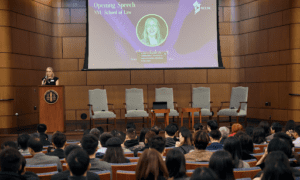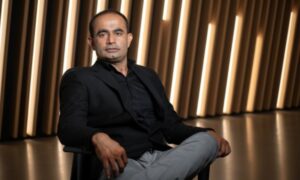In an era marked by rapid technological advancements and shifting societal norms, educators face unprecedented challenges in the classroom. To gain insight into these pressing issues, we sat down with Dr. Maythem Kamal Al-Adilee, an Assistant Professor with over 20 years of academic and training experience. He is recognized by the United States and Canadian WES and the Australian VETASSESS as a professional academic. Additionally, Dr. Maythem is an IEEE Senior Member and a former CEO of Marble Arches Solutions and Consultancy. As an Accredited HRD Corp Trainer in Malaysia and a Microsoft Expert 21st Century Educator, he specializes in Artificial Intelligence, Machine Learning, Deep Learning, and the Internet of Things, making him a distinguished expert in education. Dr. Maythem shares his perspectives on the evolving landscape of teaching and the strategies educators can employ to foster effective learning environments.
Q: Thank you for joining us today, Dr. Maythem. To start, what do you believe are the most significant challenges educators face when teaching today’s students?
Dr. Maythem: Thank you for having me. One of the primary challenges is the impact of technology on student engagement. Today’s students, particularly those from Generation Z and Generation Alpha, have grown up in a digital world. This has resulted in shorter attention spans and a tendency to multitask, which can significantly hinder their ability to engage deeply with the material. Additionally, the overreliance on technology can lead to a lack of critical thinking skills, as students often accept information at face value without questioning its validity.
Q: That’s a critical observation. How can educators adapt their teaching methods to address these challenges effectively?
Dr. Maythem: Educators need to embrace innovative teaching strategies that resonate with today’s learners. Traditional lecture-based approaches often fail to capture students’ attention. Instead, we should focus on student-centered learning experiences that incorporate hands-on projects, collaborative discussions, and real-world applications. This not only keeps students engaged but also helps them develop essential critical thinking and problem-solving skills. For instance, project-based learning that addresses real-world issues can foster a sense of purpose and relevance in their studies.
Q: You mentioned the importance of real-world applications. Can you provide an example of how this might look in a classroom setting?
Dr. Maythem: Certainly! In a computing classroom, for instance, students could tackle a real-world problem by developing a mobile app that helps local businesses manage their inventory more efficiently. They would start by researching the challenges these businesses face, then design and code the app using programming languages like Java or Swift. Throughout the project, they would engage in hands-on learning, testing their app with actual users to gather feedback and make improvements, ultimately presenting their final product to the business owners. This not only enhances their technical skills but also demonstrates the practical impact of their work in the community.
Q: Prof, mental health is another significant concern among students today. Many parents are concerned about it. How can educators support their students in this area?
Dr. Maythem: Mental health challenges have indeed escalated, exacerbated by factors such as social media pressures and academic expectations. Schools should prioritize mental health resources and create supportive environments. This includes training teachers to recognize signs of distress and providing students with access to counseling services. Additionally, fostering a classroom culture that emphasizes collaboration and emotional well-being can make a substantial difference in students’ overall mental health. In fact, I have instructed some of my students to create an AI chatbot that serves as a psychological therapist or counselor, available for students 24/7 right in their pockets, and they successfully developed it. This innovative approach not only provides immediate support but also encourages students to engage with mental health resources in a more accessible way.
Q: That is really interesting, Prof. With the rise of artificial intelligence in education, what role do you see it playing in the classroom? And would it be suitable to deploy AI in teaching?
Dr. Maythem: AI presents both opportunities and challenges in the educational landscape. On one hand, it can be a powerful tool for personalized learning, helping to tailor educational experiences to individual student needs. For instance, AI can analyze student performance data and suggest customized learning paths, ensuring that each student receives the support they require to succeed. However, there are also risks associated with its use. One significant concern is the potential for students to become overly reliant on AI for their work, which could undermine their learning process and critical thinking skills. Therefore, it is essential for educators to find a balance.
Integrating AI in ways that enhance learning while promoting critical thinking and creativity is crucial. For example, teaching students how to evaluate the credibility of AI-generated information is vital in today’s digital age. Additionally, while AI can automate administrative tasks, allowing teachers to focus more on instruction, it should never replace the human connection that is fundamental to effective teaching. While deploying AI in teaching can be beneficial, it must be approached thoughtfully, ensuring that it complements traditional educational methods rather than replacing them.
Q: Finally, what advice would you give to educators who may feel overwhelmed by these challenges?
Dr. Maythem: It’s essential for educators to practice self-care and seek support from their peers. Collaboration among teachers can lead to innovative solutions and shared strategies for overcoming challenges. Professional development opportunities focused on current educational trends can also empower educators to adapt effectively. Remember, it’s a journey, and being open to change is key to navigating this evolving landscape.
Q: Thank you, Dr. Maythem, for sharing your insights today. It’s clear that while the challenges are significant, there are also many opportunities for growth and improvement in education.
Dr. Maythem: Thank you for having me! I hope our discussion inspires educators to embrace these challenges as opportunities for positive change.
As we navigate the complexities of modern education, the insights shared by Dr. Maythem remind us that adaptability, creativity, and a focus on mental health are essential for fostering a thriving learning environment. By embracing innovative teaching methods and prioritizing student well-being, educators can effectively meet the needs of today’s diverse student populations.



































